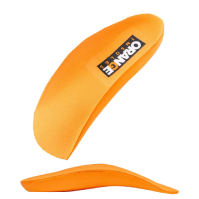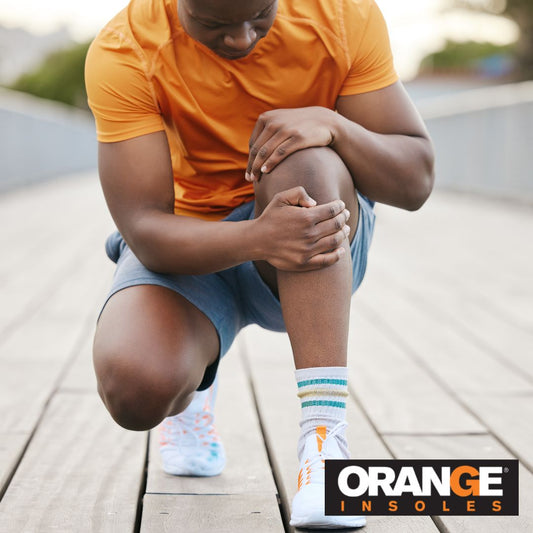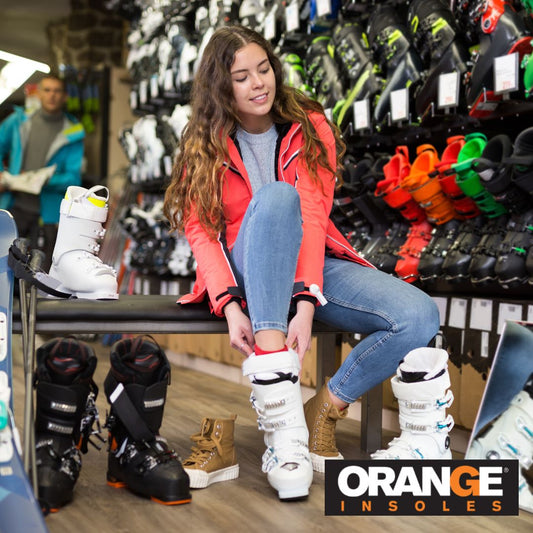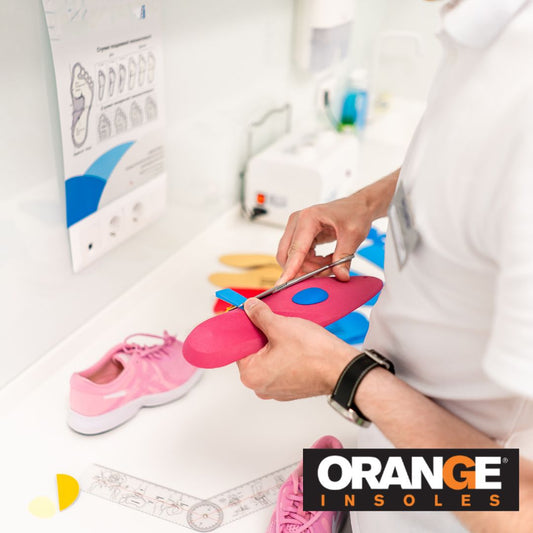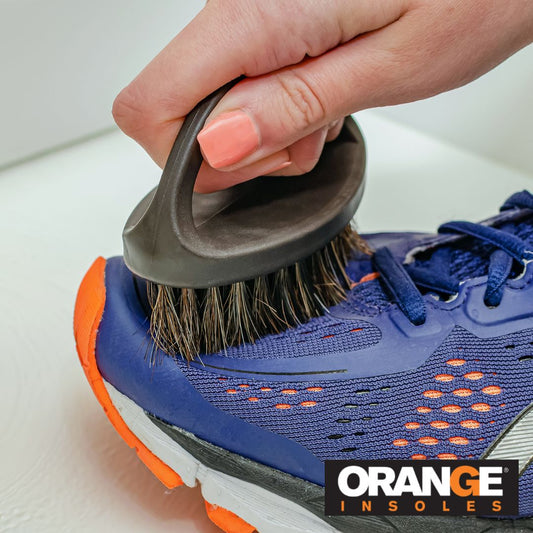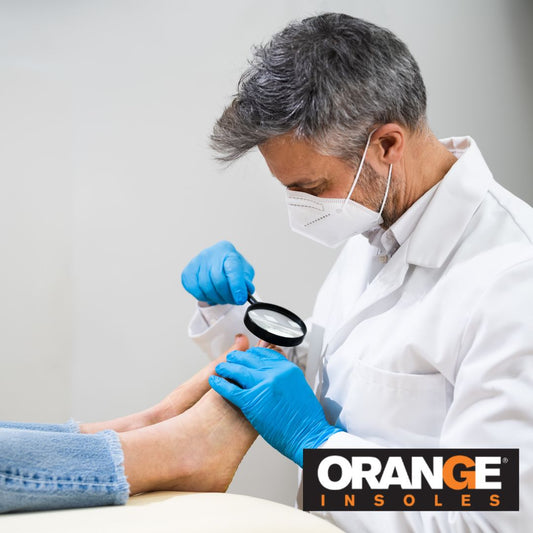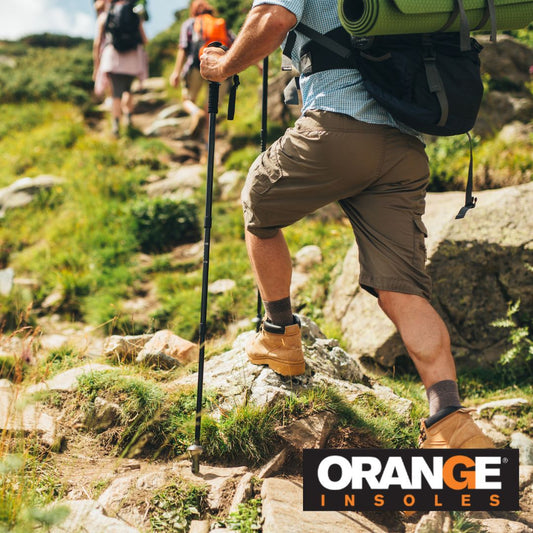Your socks might seem like the least important thing you put on your body when getting ready in the morning. You just grab what’s handy, hope they match, and move on with your life. But when your feet hurt halfway through the day, or are blistered and uncomfortable halfway through your hike or run, your socks are one of the first things you should think about.
The fit, thickness, and material of our socks can determine how our feet feel at the end of the long day and our activities will determine what type of socks will keep us most comfortable. Before you buy that economy pack of ankle socks and decide you’re good for the year, use The Orange Guide to Sock Selection to find the right sock for your lifestyle.
Sock Materials:
The material of your sock can help keep your feet cool and dry.
Cotton:
Cotton may be extremely comfortable but it’s not really a great material for socks. It’s a hydrophilic material which means it loves water and holds onto it and a wet sock is your foot’s worst enemy. A wet sock will cause blisters and can make your foot feel colder.
Cotton is fine for casual-wear at home or strolling around town on a Sunday, but if you’re going to be engaging in intense walking, running, or high-aerobic activity, you’ll want to choose a sock with low cotton content or no cotton at all.
Merino Wool
Merino Wool is not the itchy, uncomfortable wool of your grandma’s handmade sweaters. Merino wool is made of fine, itch-free fibers and each fibre can naturally help regulate body temperature, pull sweat away from the body and cancel odor.
This material is thermostatic so your feet will stay one (comfortable) temp, no matter the temperature outside. This is a great material to wrap your feet in when you go hiking, or engage in any outdoor activity where you’ll be exposed to varying temps, possibly sweating, and walking a lot (this wool provides a great cushion!). Wool can absorb up to 30% of its weight in water, which helps feet remain dry in most conditions.
Synthetic Material
Synthetic materials are man-made to mimic the best features of other natural materials. Synthetic socks tend to be hydrophobic which means water does soak into the core but is wicked away from the skin.
Materials like Nylon and Spandex help socks retain their shape and create a snug fit so they stay in place even when you’re running.
Sock Thickness
The thickness of a sock is a personal preference but should also be considered when choosing socks for hiking, running, or depending on the season.
Thicker socks obviously provide more cushion but also more warmth. In the winter, a thicker sock is the obvious choice so you should go for a mid-weight or heavyweight sock, unless you’re running.
But if you’re hiking during warm months, you may want try out different options and be prepared with alternatives. You don’t want your feet to get sweaty but you also don’t want blisters. Too thin of a sock and you risk your shoes rubbing a painful way. If you’re going a long way, you’ll want at least a medium weight sock no matter how hot it is but…always be prepared! If you’re on a long trip, bring some extra socks that are a different thickness than what you’re wearing.
Sock Fit
One of the most important aspects of a sock is how it fits. If it’s constantly moving or slipping, the risk of blisters is higher.
Articulated socks are designed to move and bend with your foot so they fit better and stay in place better than socks without stitches at the joint. Theses socks typically have a defined heel and stretch material around the arch. The stitching in the toes is designed to have a subtle seam not to rub. An example of a non-articulated sock would be a tube sock.
While we don’t give much thought to the way a sock should fit, your sock should:
- Fit snugly without cramping your toes
- Not have any extra material hanging that could fold
- Fit snugly around your arch
- Have flat seams (particularly on the toes)
When you try on socks (yes, you should try on socks!), pay close attention to how they feel in the toe and the heel. Correct length is key.
Too short = the sock will slide into the shoe and feel tight
Too long = the sock will bunch over your toes
Tip: Make sure to try on heavily padded socks with your shoes to make sure they’re not too tight.
Correct fit in each part of your foot looks like:
Heel: The sock heel sits at your heel, not above or below it
Toe Seam: The toe seam should lie flat along the top of your toe, not above or below
Across the Foot: The sock should be tight across the top of your foot and there shouldn’t be any sagging materials
Signs You’re Not Wearing The Right Sock
If you’re not wearing the right sock you might not notice pain right away but you could end up with blisters or sore feet. Before it gets to that point, watch out for:
- Bunching
- Your sock falling down
- Toe seem isn’t flat
- The heel is too high or too low
- You have blisters
- Your socks feel damp at the end of the day
Optimum Foot Comfort
Pairing just the right sock with just the right insole for your foot or activity can lead to a cozy foot that isn’t sore at the end of the day and doesn’t contribute to back aches, neck aches, or other ailments. While there is no prime sock/insole combination, utilizing both forms of support can make any activity more enjoyable.
If you’ve never had a really good sock, you should consider the investment. The fit, feel and performance is easy to feel and appreciate…and your feet will thank you.


